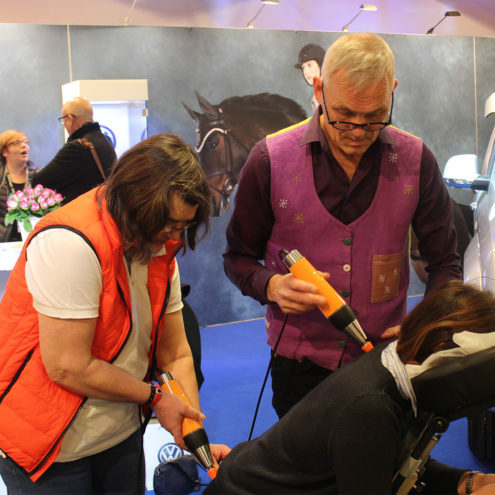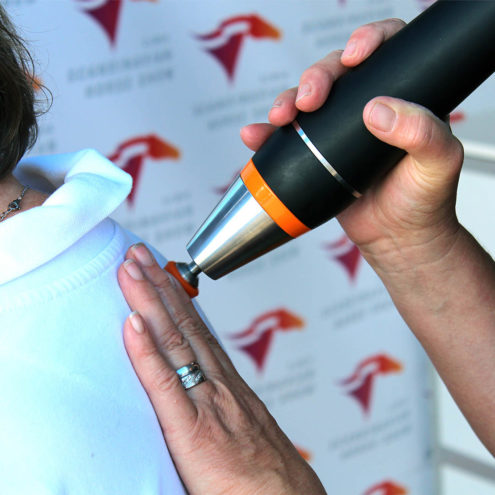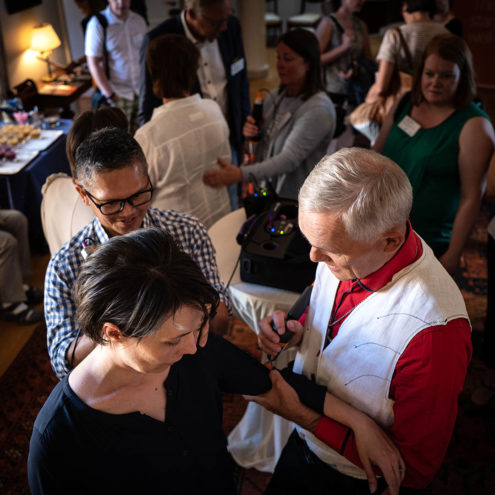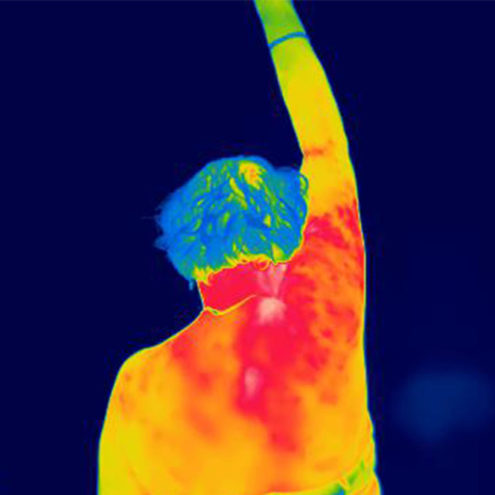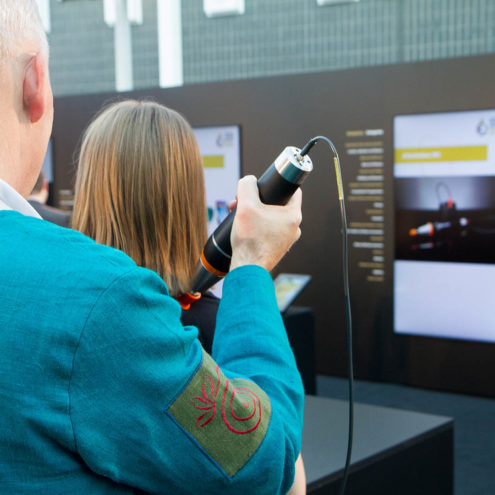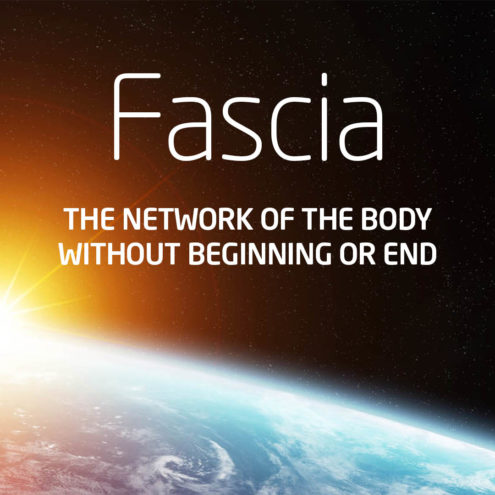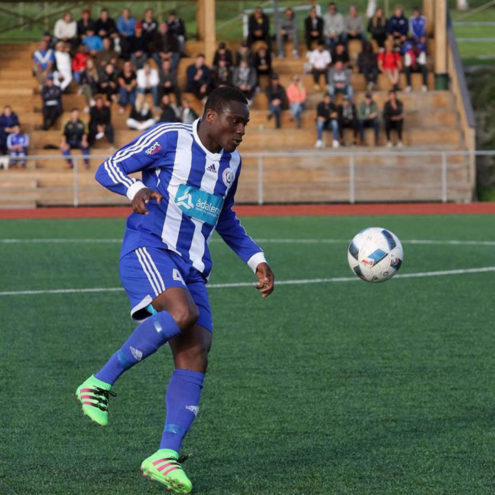Neck pain
Recent research shows that neck pain is due to inflammation of the fascia, the connective tissue
When the cobweb-like collagen threads stick together, nerve endings get pinched and signal pain.
The FasciaClinics offer both immediate help with pain-relieving Fascia treatment and specially trained Fascia therapists who have helped thousands of people overcome the root cause of neck pain.
What causes neck pain?
Most commonly, neck pain, soreness, stiffness and aches are due to some form of overexertion and come on gradually over time. The cause may be a poor working posture, heavy lifting or an underlying stress that causes you to tense up and unconsciously pull up shoulders and get a bad posture. Often it has been creeping up on you over a long period of time, but it can also come on suddenly as in the case of neck strain or after a trauma such as whiplash in a fall or crash.
An imbalance due to asymmetries in spinal loading affects the fascia, joint capsules, ligaments around the spine and affects nerve receptors that can start to signal pain when they become overloaded and the pressure becomes too great.
If you suddenly experience severe pain, especially in combination with fever and malaise, you should be vigilant and seek medical attention.
Why do I have neck pain?
This may be due to too much sedentary work, poor forward leaning posture or sleeping position. Stress and anxiety can also create tension, which over time can cause pain and stiffness in the neck.
What is neck pain a symptom of?
Neck pain is usually a symptom of an overload of muscles, fascia and other soft tissues around the neck and shoulders. The overload can be caused by an excessively static working posture for a long time, poor posture that results in misalignment, psychological stress, etc.
More rarely, neck pain comes from serious illness or injury.
Neck pain during pregnancy
During pregnancy, the structure of the fascia changes due to hormonal influences and becomes softer and at the same time less stable. This results in more work for the muscles, which have to take over much of the fascia’s stabilizing role. The center of gravity also changes, putting additional strain on the fascia and muscles, which in turn affects and presses pain receptors that signal pain.
When and where should I seek treatment for neck pain?
If you suddenly experience severe pain, especially if it is combined with fever and malaise, you should be vigilant and seek medical attention. If you have hurt your neck after a trauma, you should have it examined to make sure it is not a serious injury.
If you have pain due to any overload or stress, it is advisable to seek help at a FasciaClinic as soon as possible to release tensions and imbalances.
How is neck pain treated?
Treatment at a FasciaClinic involves an analysis of symmetry/asymmetry to investigate whether joints and soft tissues are loaded equally over the left and right sides. Depending on the cause of the problem, a treatment plan is made. If the problem has lasted for a long time, it may not be possible to solve it in one treatment. The whole treatment is about getting the body symmetrical and in balance. The straightness of the pelvis is key, as misalignments and rotations are propagated and can also cause problems in the neck.
Neck pain – What can I do myself?
Moving around and not sitting still for too long is essential. In principle, movement is always the best way to allow the body to heal. Avoid sitting still in the same position for too long. Use a height-adjustable desk so that you can alternate sitting with standing, change your working position, take breaks, go for a short walk, move your arms, neck and shoulders.
Exercises for neck pain?
Relaxation exercises together with deep breathing. Lie on your back with your legs on a chair, hips and knees bent at 90°. Arms out from the body, palms up. Breathe deeply, drawing in deeply so that your stomach rises. Hum on exhalation. Feel how your back and shoulders come down heavier towards the floor. Lie like this for 10 minutes.
Kneel on all fours, alternately arching your back and swaying, while keeping your head in the movement. Repeat a few times. Gets the whole back, shoulders and neck moving.
 Search
Search








